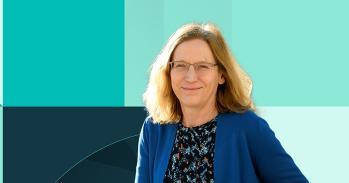
A generation of talented but disadvantaged children are being denied access to higher education because academic success in lower- and middle-income countries is continually ‘protected by wealth’, a study has found.
A generation of talented but disadvantaged children are being denied access to higher education because academic success in lower- and middle-income countries is continually ‘protected by wealth’, a study has found.
These inequalities in higher education access have nothing to do with ability: this is about systems which are consistently failing poorer children
Sonia Ilie
The research, which used data from around 3,500 young people in Ethiopia, India, Peru and Vietnam, shows that promising but poorer students ‘fall away’ during their school years, as challenges associated with their socio-economic circumstances gradually erode their potential. Among children who showed similar levels of ability aged 8, for example, the wealthiest were often over 30 percentage points more likely than the least-wealthy to enter all forms of tertiary education: including university, technical colleges, and teacher training.
Even when they focused only on students who complete secondary school with comparable levels of learning, the researchers found that those from wealthier backgrounds were still more likely to progress to higher education. They describe their findings, reported in the British Education Research Journal, as indicative of the ‘protective effect’ of wealth in relation to academic advantage.
The study was undertaken by the Research in Equitable Access and Learning (REAL) Centre at the Faculty of Education. Dr Sonia Ilie, its lead author, said: “In many lower-income countries, low socio-economic status is a continual barrier to young people’s attainment. What is clear is that these inequalities in higher education access have nothing to do with ability: this is about systems which are consistently failing poorer children.”
The data used in the research was from Young Lives, an international childhood poverty study which is tracking two cohorts of young people from Ethiopia, India, Peru and Vietnam. The Cambridge researchers focused on the group born in 1994/5. Young Lives includes information about education and attainment at ages 8, 12, 15, 19 and 22, and importantly therefore includes the many young people in lower-income countries who may enter higher education after age 19.
The researchers started by comparing basic entry rates into higher education among the poorest 25% and wealthiest 25% of participants. The percentage point gap between these quartiles was 45 in both India and Peru, 41 in Vietnam, and 17 in Ethiopia.
They then analysed higher education progression rates among increasingly comparable groups of students. First, they focused on those with similar demographic characteristics (such as gender, ethnicity, and whether they lived in urban or rural settings). They then progressively added more information about their education to examine students who were both in school, and achieving certain attainment levels, aged 8, 12 and 15.
The gap between the poorest and richest students’ likelihood of enrolling in higher education narrowed steadily as each level of information was factored in. Given the disparity in the ‘raw’ wealth gap, this indicates that children from poor backgrounds often fail to progress because they drop out, or under-achieve, throughout primary and secondary school. It also suggests that factors such as a person’s gender interact with their socio-economic status to influence their likelihood of progressing to higher education.
Crucially, however, a gap still existed between rich and poor even among students who finished secondary school with comparable levels of learning. The size of the remaining gap reflected the complexities of each country’s higher education systems, but showed that at the same level of schooling and learning, wealth played this protective effect.
The study also analysed the progress of ‘high-promise’ children. The researchers identified all children who had achieved a certain level of literacy at age 8, and then used numeracy and maths scores to compare the educational trajectories of the richest and poorest among this group.
Overall, the attainment gap between high-promise children from the top and bottom wealth quartiles widened during school, even though their test scores were similar at age 8. Ultimately, many more high-promise children from the richest quartile entered higher education compared with the poorest: the percentage point gap between the two groups was 39 in Peru, 32 in India and Vietnam, and 15 in Ethiopia.
“Even among children who do well to begin with, poverty clearly becomes an obstacle to progression,” Ilie said. “The reverse also applies: if they are wealthy, even children with initially lower levels of learning catch up with their poorest peers. This is what we mean by the protective effect of wealth.”
The study says that the first priority in addressing the higher education wealth gap should be targeted investment in primary education for the very poorest. This is already an emerging policy focus in many lower-income countries, where disadvantaged children, even if they go to school, often have poor learning outcomes. The reasons for this, documented in several other studies, include limited educational resources and support at home, and practical difficulties with school attendance.
The findings also indicate, however, that targeted support should continue during secondary education, where wealth-related barriers persist. In addition, the residual wealth gap even among those who finish secondary school highlights a need for initiatives that will reduce the cost of higher education for disadvantaged students. The study suggests that means-tested grants may be one viable solution, but further evidence is required. It also warns that at present, taxation-based funding for higher education will essentially ‘subsidise a socio-economic elite’, while tuition fees will further prohibit access for the poorest.
Professor Pauline Rose, Director of the REAL Centre, said: “If we want to equalise opportunities at the point of entry into higher education, we have to intervene early, when the wealth gaps emerge. This study shows that targeted and sustained interventions and funding are needed for the poorest students not only in their earliest years, but throughout their educational careers.”

The text in this work is licensed under a Creative Commons Attribution 4.0 International License. Images, including our videos, are Copyright ©University of Cambridge and licensors/contributors as identified. All rights reserved. We make our image and video content available in a number of ways – as here, on our main website under its Terms and conditions, and on a range of channels including social media that permit your use and sharing of our content under their respective Terms.




